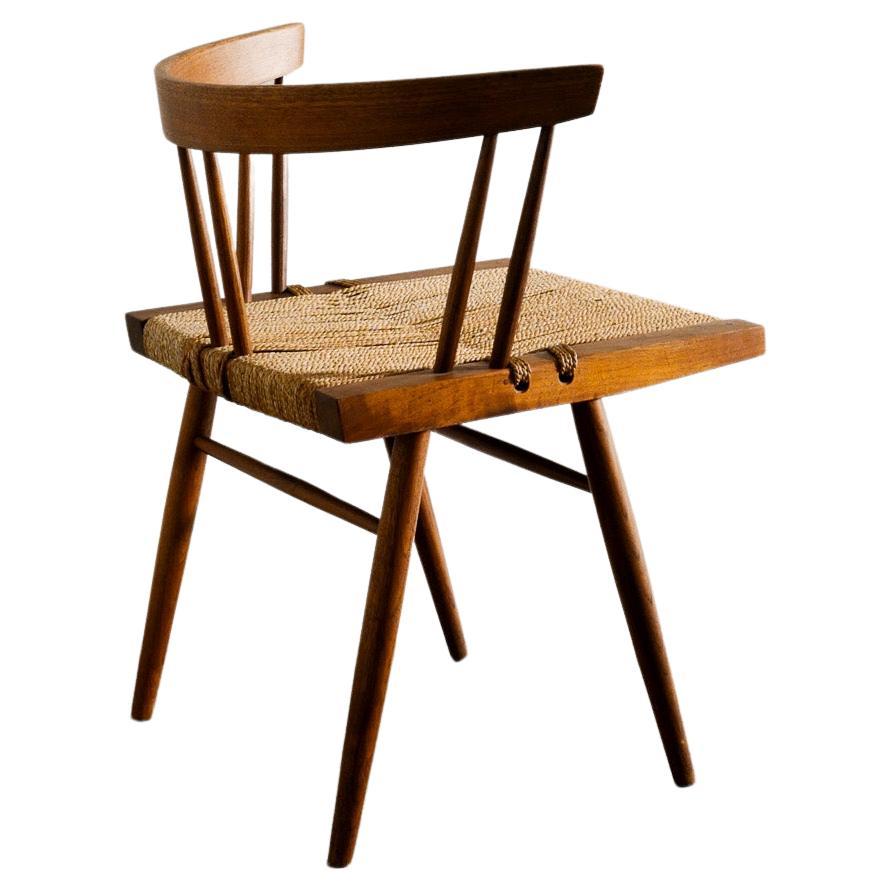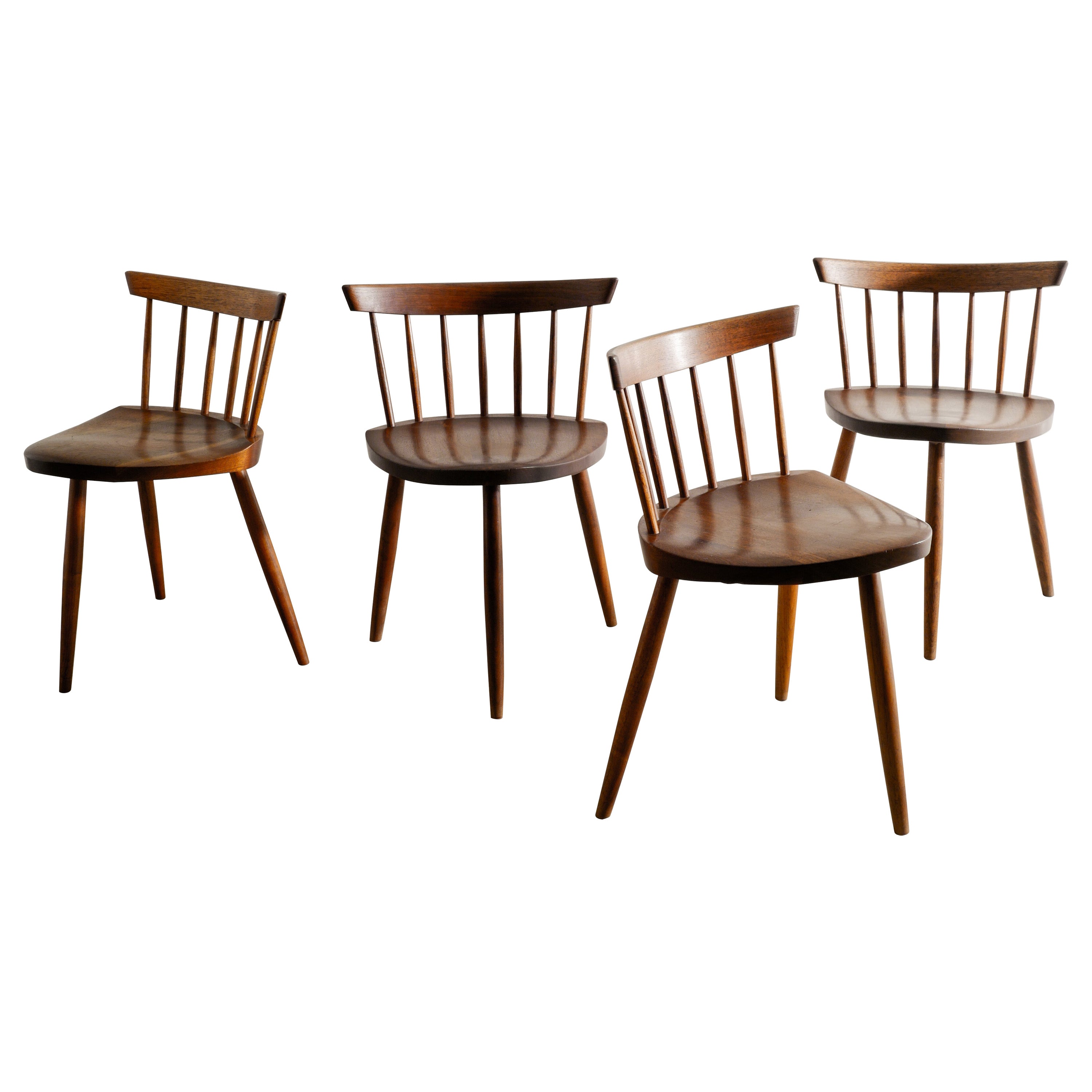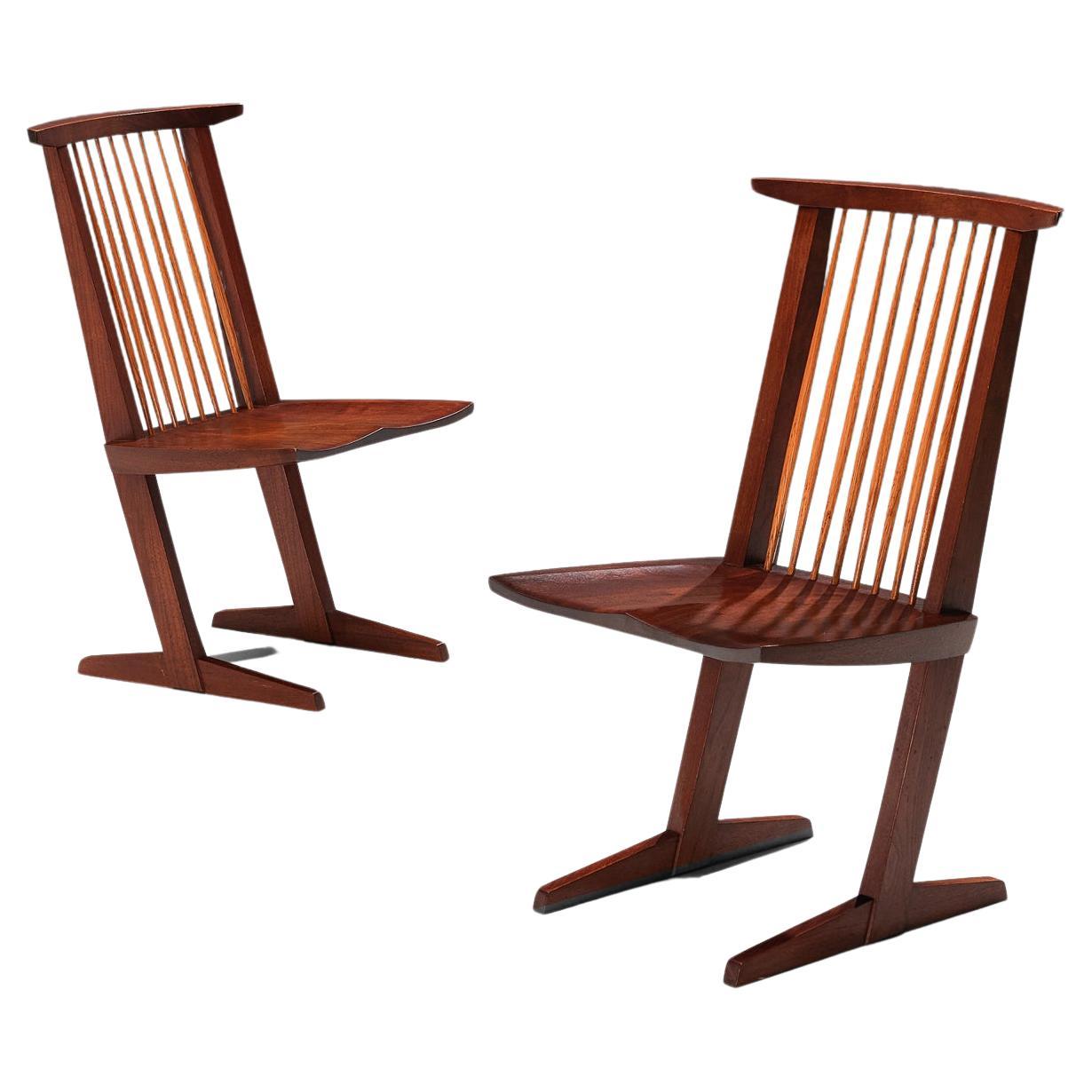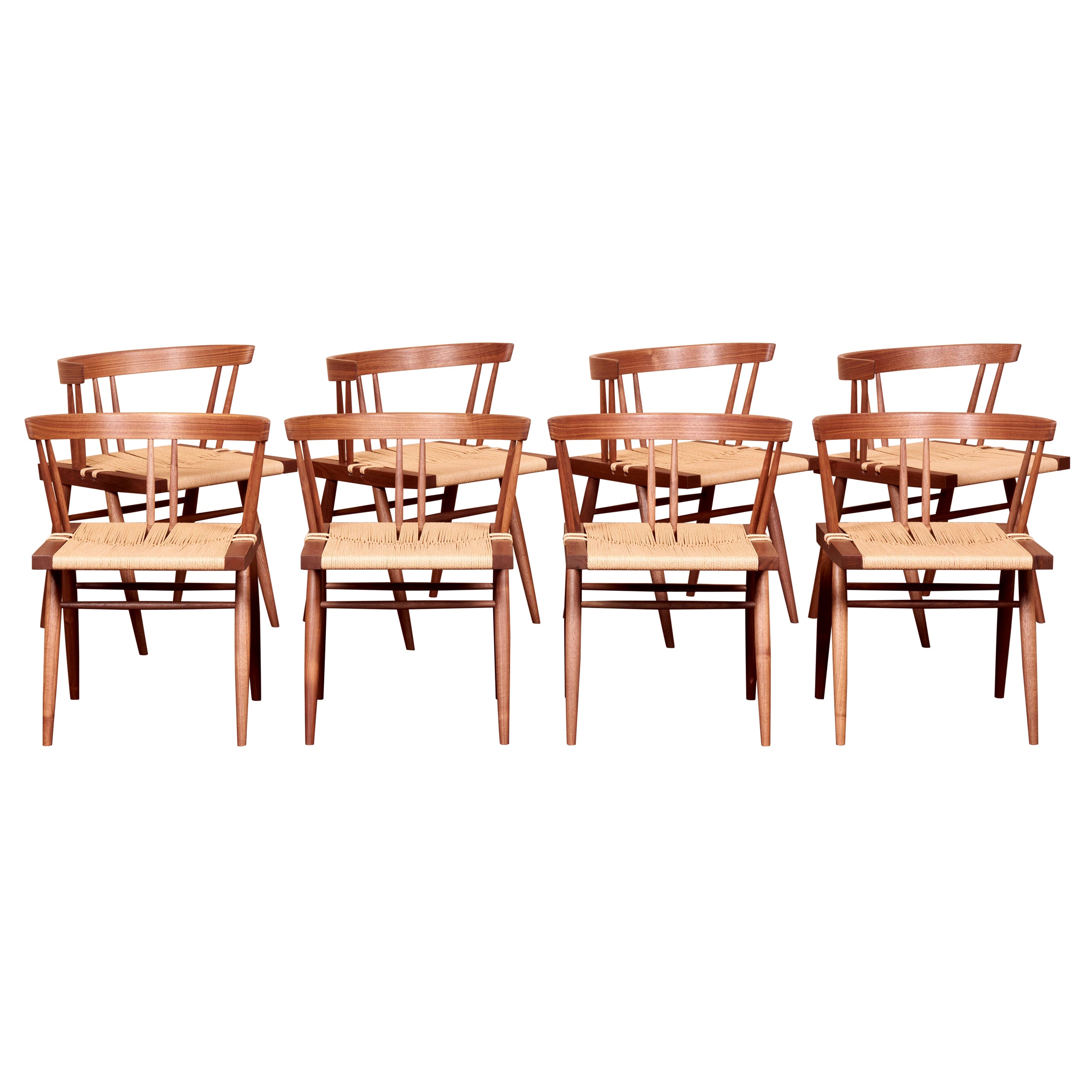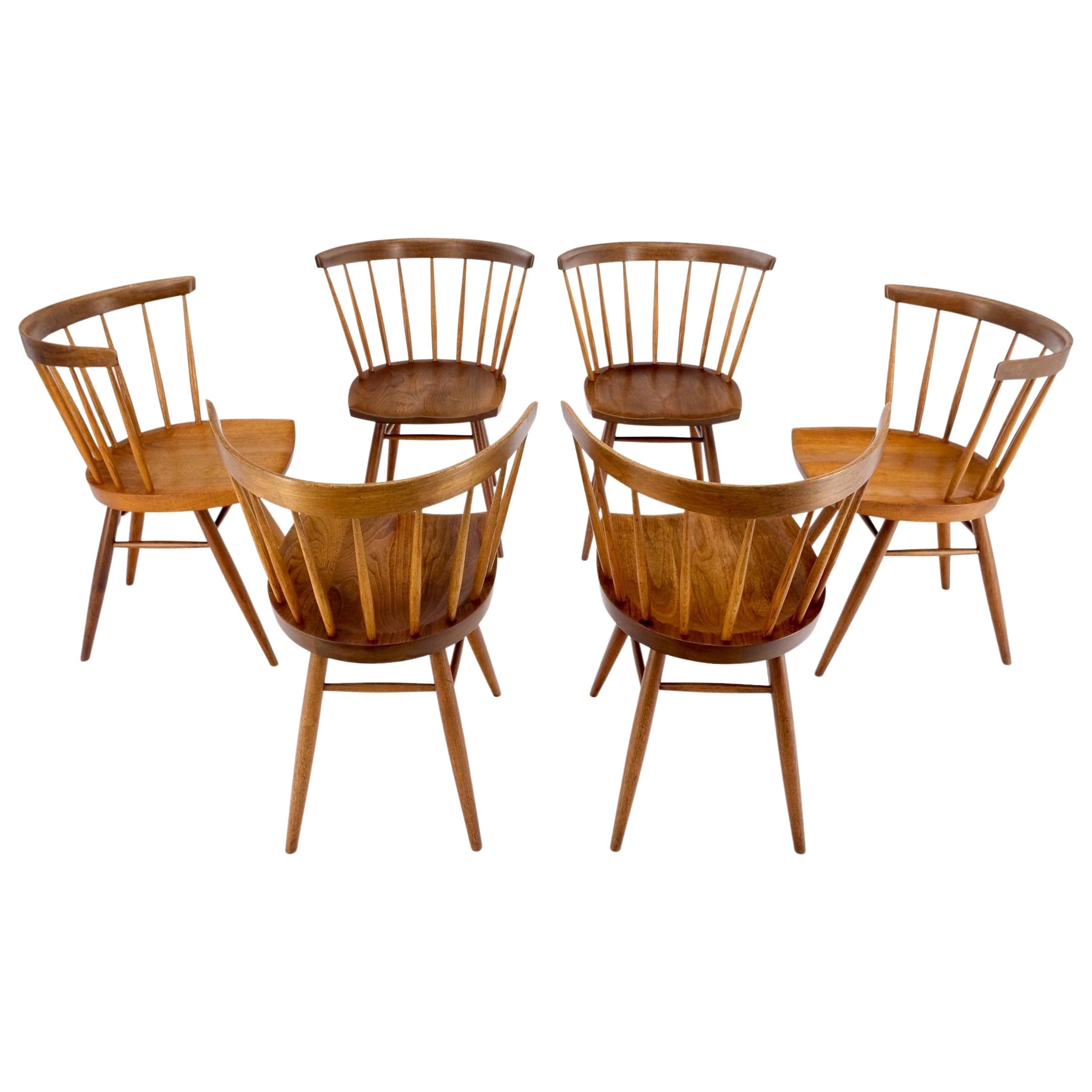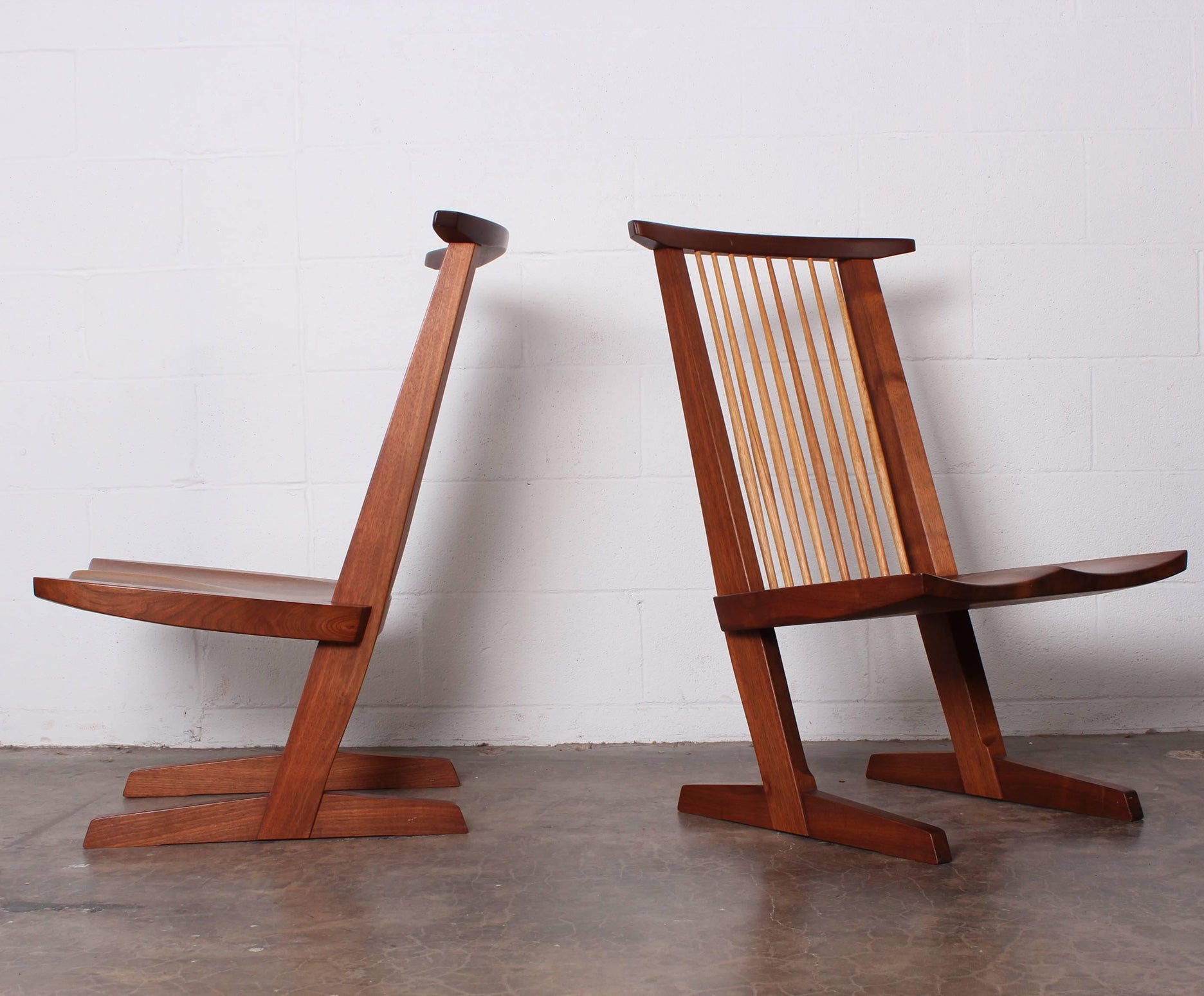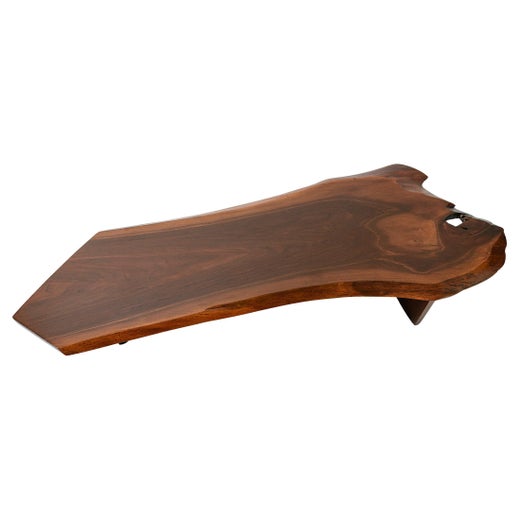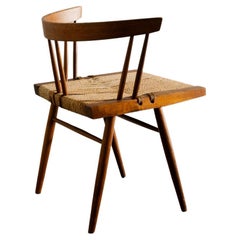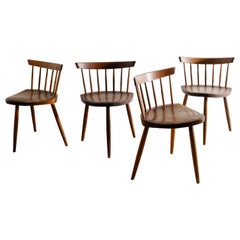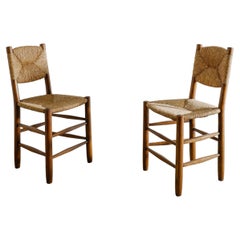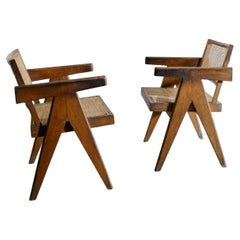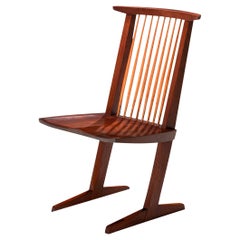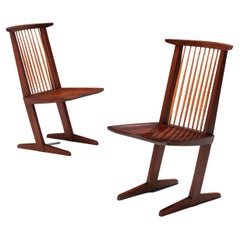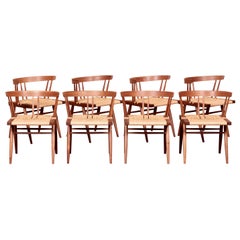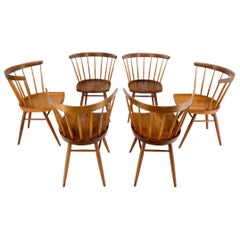George Nakashima Mid Century Wooden Walnut Grass Straw Dining Office Chair 1960s
About the Item
- Creator:George Nakashima (Designer)
- Design:Conoid ChairConoid Series
- Dimensions:Height: 27.17 in (69 cm)Width: 22.45 in (57 cm)Depth: 18.12 in (46 cm)Seat Height: 16.93 in (43 cm)
- Style:Mid-Century Modern (Of the Period)
- Materials and Techniques:
- Place of Origin:
- Period:
- Date of Manufacture:1960s
- Condition:Wear consistent with age and use. Minor losses.
- Seller Location:Stockholm, SE
- Reference Number:1stDibs: LU5488241961282
Conoid Chair
George Nakashima (1905–90) famously said, “Furniture should be lived with and not treated as something overly precious,” so it’s not surprising that his Conoid chair was made to be dragged across carpeting.
First built in 1971, the Conoid chair is one of Nakashima’s most celebrated and recognizable designs. It features a slab of black walnut cantilevered over two legs, with distinctive feet that resemble old-fashioned sled runners.
Born in Spokane, Washington, Nakashima led a singular life devoted to woodworking. Although he collaborated with Knoll after World War II as a pioneer of the American Studio Craft movement, he rejected mass production and believed the beauty of a tree lay in its vast imperfections. Nakashima studied architecture extensively, receiving a master’s degree from the Massachusetts Institute of Technology in 1930. But he found inspiration — and picked up essential woodworking techniques — from those around him: the architect Antonin Raymond, who worked with Frank Lloyd Wright, as well as fellow Japanese-Americans he encountered when he and his family were interned in Idaho during World War II. Raymond petitioned for the release of the Nakashima family from the camp and helped them resettle in New Hope, Pennsylvania. The Conoid chair’s thin hickory spindles, shaved and faceted by hand with a blocking plane, echo those of colonial Windsor chairs found in Pennsylvania homes in the 1700s. Nakashima’s chair is named for the Conoid Studio he built in New Hope in 1957.
George Nakashima
A master woodworker and M.I.T.-trained architect, George Nakashima was the leading light of the American Studio furniture movement. Along with Wharton Esherick, Sam Maloof and Wendell Castle, Nakashima was an artisan who disdained industrial methods and materials in favor of a personal, craft-based approach to the design of chairs, coffee tables and other pieces. What sets Nakashima apart is the poetic style of his work, his reverence for wood and the belief that his furniture could evince — as he put it in the title of his 1981 memoir — The Soul of a Tree.
Born in Spokane, Washington, to Japanese immigrants, Nakashima traveled widely after college, working and studying in Paris, Japan and India, and at every stop he absorbed both modernist and traditional design influences.
The turning point in Nakashima’s career development came in the United States in 1942, when he was placed in an internment camp for Asian-Americans in Idaho. There, Nakashima met a master woodcarver who tutored him in Japanese crafting techniques. A former employer won Nakashima’s release and brought him to bucolic New Hope, Pennsylvania, where Nakashima set up a studio and worked for the rest of his life. (Master craftsperson Mira Nakashima keeps her father’s legacy alive at the George Nakashima Studio in New Hope today. She has been the artistic director of George Nakashima Woodworkers since her father's death, in 1990.)
Nakashima’s singular aesthetic is best captured in his custom-made tables and benches — pieces that show off the grain, burls and whorls in a plank of wood. He left the “free edge,” or natural contour, of the slab un-planed, and reinforced fissures in the wood with “butterfly” joints.
Almost all Nakashima seating pieces have smooth, milled edges. Nakashima also contracted with large-scale manufacturers to produce carefully supervised editions of his designs. Knoll has offered his Straight chair — a modern take on the spindle-backed Windsor chair — since 1946; the now-defunct firm Widdicomb-Mueller, the result of a merger between Widdicomb and Mueller Furniture, issued the Shaker-inspired Origins collection in the 1950s.
Nelson Rockefeller in 1973 gave Nakashima his single largest commission: a 200-piece suite for his suburban New York estate. Today, Nakashima furniture is collected by both the staid and the fashionable: his work sits in the collections of the Philadelphia Museum of Art, New York’s Metropolitan Museum of Art and the Smithsonian Institution, as well as in the homes of Steven Spielberg, Brad Pitt, Diane von Furstenberg and the late Steve Jobs.
Find vintage George Nakashima furniture for sale on 1stDibs.
- ShippingRetrieving quote...Shipping from: Stockholm, Sweden
- Return Policy
More From This Seller
View AllVintage 1960s American Mid-Century Modern Chairs
Straw, Walnut
Vintage 1960s American Mid-Century Modern Dining Room Chairs
Walnut
Vintage 1960s French Mid-Century Modern Dining Room Chairs
Straw, Ash
Vintage 1950s French Mid-Century Modern Dining Room Chairs
Rattan, Teak
Vintage 1960s French Mid-Century Modern Dining Room Chairs
Elm
Vintage 1970s Danish Scandinavian Modern Dining Room Chairs
Pine
You May Also Like
Vintage 1960s American Mid-Century Modern Dining Room Chairs
Hickory, Walnut
Vintage 1960s American Mid-Century Modern Dining Room Chairs
Hickory, Walnut
21st Century and Contemporary American Mid-Century Modern Dining Room Ch...
Seagrass, Walnut
20th Century American Mid-Century Modern Dining Room Chairs
Walnut
21st Century and Contemporary American Mid-Century Modern Dining Room Ch...
Walnut
Vintage 1960s American Mid-Century Modern Dining Room Chairs
Cherry
